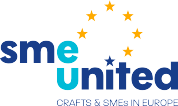
On 31 May 2018, in Brussels, EFESME (European Federation for Elevator Small and Medium-sized Enterprises) organised the SBS Seminar Making Safety Standards for Lifts “Global”. The audience, consisting of officers and entrepreneurs, learned about the process of converging safety standards for lifts, thanks to presentations from the Chairmen of the two Technical Committees involved in the process: Mr Esfandiar Gharibaan for the CEN TC 10 and Mr Gero Gschwendtner for ISO TC 178.
As mentioned by the SBS President, Mrs Gunilla Almgren, in her welcome speech, and by the EFESME Secretary General, Mr Luciano Faletto, in his closing remarks, the seminar offered a sufficient basis to understand the opportunities and challenges of the lift sector. Not only at the European level, but also at international level, to which lift SMEs are also subject.
CEN
In his presentation, Mr Gharibaan highlighted the work of the CEN TC 10 on improving the safety for lift users and operators. It took almost 10 years to finalise the amended version of the two former European standards, EN 81-1 (for electric lifts) and EN 81-2 (for hydraulic lifts). This work ended with the two new standards EN 81-20 (Requirements for complete passenger or goods passenger lift installations independent of the driving system) and EN 81-50 (Description of the examinations, calculations and tests of lift components used in any type of lift (passenger, goods passenger, goods only lift, etc.)).
Mr Gharibaan also explained all the major modifications introduced to improve the level of safety for lift users and service operators. For the currently developed amendment of the EN 81-20/50, he underlined that the proposal submitted by SBS is still on the table of the WG1; this was confirmed by the SBS expert attending that WG. Moreover, Mr Gharibaan presented the milestones of the Roadmap to the convergence of CEN and ISO standards, approved by both standardisation bodies. The Roadmap is developing in three main phases: the identical adoption of the EN 81-20/50 as ISO 8100-1/2 with the necessary regional differences; the adoption of a unique ‘EN ISO standard’; and regular revision of the latter, aimed at gradually reducing regional differences. According to the Roadmap, the two standards are supposed to coexist in a first period. The EN ISO 8100-1/2 will then enter into force in July 2021 and the EN 81-20/50 will be withdrawn in July 2023.
ISO
During his presentation, Mr Gschwendtner introduced the audience to the ISO world, and in particular the TC 178, established in 1979. He pointed out that the number of codes has been drastically reduced, from the original 27 to the current three (the North-American A17.1/B44, the European EN 81 and the Japanese JIS). This value eventually will decrease to one, after the convergence has been completed. Mr Gschwendtner also explained the dual safety paths currently existing: the ‘performance-based’ approach supported by a conformity assessment with reference to the Global Essential Safety Requirements, and the ‘prescriptive-based’ approach built on the presumption of conformity given by the harmonised standards.
Turning to convergence, Mr Gschwendtner provided a clear, concise and very detailed explanation of the complicated roadmap in place now. This roadmap will allow coordination of all the necessary activities, which are required to monitor the progressive definition of all the details leading to the expected convergence of three international standards into the final one. The presenter’s explanation brought some much-needed clarity about a very complicated and time-consuming matter.
In the Questions & Answers section, the numerous requests from the audience underlined that SMEs have only recently started paying attention to standardisation, especially at the international level, after the growing expansion of their businesses outside national borders. Focusing on the specific issue of the globalisation of lift safety standards, those enterprises taking part in this convergence process are increasingly keen to understand the timetable, the objectives and the expected impact on their businesses. They also want to be the main players of their sector.
In his conclusions, Mr Faletto mentioned the opportunities and challenges of this convergence process. It is evident that the unification of codes brings advantages in the wider international market. This unification will facilitate not only our lift businesses, but also an improvement in the safety of lift users and operators. Nevertheless, the use of international standards to support European regulations is neither simple nor automatic, as the European and international systems have different bases.
Recognising the need to align regional standards, SBS and EFESME are ready to act as “facilitators”, to quote SBS President Gunilla Almgren, in this convergence process. However, to fulfil the task, SBS and EFESME are calling for a transparent, open and honest dialogue among the different actors.




